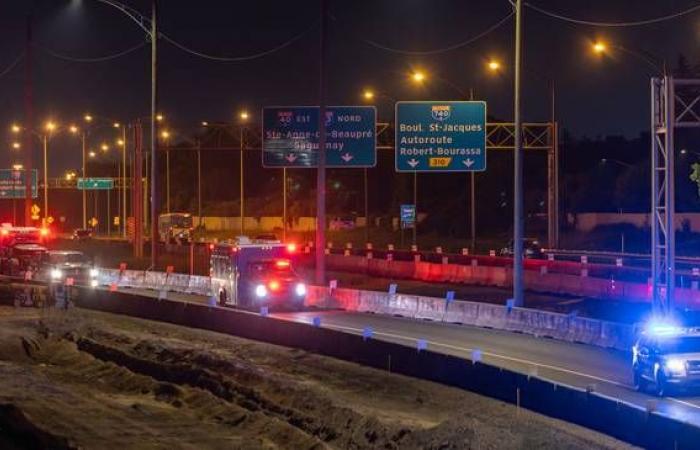On June 21, intense forest fires burned a dozen kilometers from the Port-Cartier penitentiary. The management of Correctional Services Canada had to make a quick decision: to evacuate the entire prison establishment.
Escorted by the Sûreté du Québec, the detainees were transported by truck several hundred kilometers. The convoy passed through Quebec during the night from Saturday to Sunday.
“In less than 24 hours, we completely emptied the penitentiary. It’s exceptional,” said Mike Bolduc, regional president of the federal correctional officers’ union, on Wednesday.
To safely transfer these inmates, 50 correctional officers from across Quebec came to lend a hand to those from Port-Cartier. Approximately 90 correctional services employees worked for 35 to 40 hours continuously over the weekend.
“We appealed to everyone. All of Quebec responded. It’s incredible,” rejoices Mr. Bolduc.
More than 230 prisoners
In total, 233 inmates were transferred to several other prison establishments, including Donnacona.
Even if residents of the municipality of Port-Cartier were able to return to their homes, the penitentiary will be empty for several weeks. “At the moment, the fires are still active. It’s just that the wind has changed direction. For the city of Port-Cartier, the danger is under control. But before these fires are extinguished, it can take weeks,” explains the union president.
According to the management of the penitentiary, the stability of the situation will be an essential condition to allow the reintegration of the establishment in complete safety, both regarding the fire itself and the smoke caused by the fires.
“A plan to return to the establishment is planned when conditions permit. For the moment, we are maintaining the status quo,” indicates the Correctional Service of Canada.
Obsolete equipment
Despite the many risks associated with transporting these criminals, the union and management have not reported any major incidents. “For once, I can say that the correctional service acted in prevention and not in reaction,” agrees Mr. Bolduc.
However, transportation highlighted shortcomings in equipment, according to the union representative. Lacking a sufficient number of handcuffs and foot chains, some highly dangerous detainees were restrained with plastic restraints (tie wrap), he denounces.
Six months earlier, the correctional services department removed the flashing lights from some of its vehicles, claiming that they would no longer be used in emergency situations. During the transfer, this caused a lack of visibility which could have been dangerous according to the union.
“At one point the police car was overtaking a heavy goods vehicle to be able to pass by. The truck has never seen our van arrive. He cut it and almost mowed us down. It’s a danger. We weren’t visible on the road,” reports Mr. Bolduc.
“Our vehicles are obsolete. They were left abandoned. We are the government’s poor child. He tries to save money as much as possible. Honestly, we looked like a gang of haystacks.”
— Mike Bolduc, regional president of the federal correctional officers union
Surcharge
These hundreds of additional inmates put pressure on the already insufficient penitentiary staff.
According to Mike Bolduc, some of the establishments now house almost double their usual population. “It has an incredible impact on employees. Their workload is doubled and we don’t have the staff to do it. There was a lot of extra time. We need help.”
Thus, the staff of the Port-Cartier penitentiary could be called in for reinforcement elsewhere in the coming weeks.
For its part, the Correctional Service of Canada ensures that it has “the facilities and personnel necessary to meet the operational needs of the current situation.”






